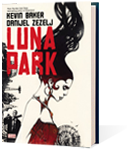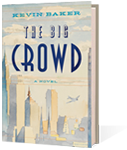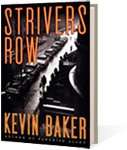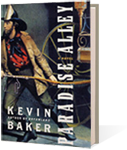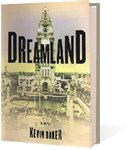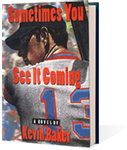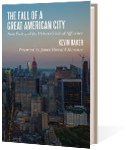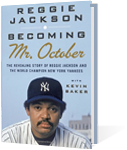A family on my block has apparently decided to live life as a performance art piece. They occupy a first-floor apartment that is long but shallow, and situated almost right at the sidewalk. The shades are up and the lights are on at all hours, so that when you walk up the street in the evening you can’t help but see them at their every activity: kids noodling on the computer, parents cooking in the kitchen or watching television. One night my wife gave a little bemused whoop as we walked home, having just seen one of the adults emerge from the bathroom as undraped as her living room windows.
To a great degree, this is how we have always lived in the city. New Yorkers are adept at simply pretending they are alone, or invisible, for better and worse. You want to look, so look, who’s stoppin’ ya? It’s the only way to survive in such an overcrowded place.
Yet it strikes me that our extroverted neighbors are still something of a throwback. City dwellers from a hundred years ago lived on top of one another in a fashion we can barely imagine today, especially in summer. Families of six, seven, ten or more living and working full-time in tiny apartments — along with a roomerkeh (boarder) or two. Using a single floor toilet in the hall, or even a latrine wedged between a front apartment building and a back tenement. Hurling epithets and refuse of all kinds down the airshaft. Jostling into the uncooled subways, unbathed and wearing the same heavy woolen clothing day after day … New Yorkers were forced to see, hear, feel and smell each other to an extent we would find well nigh unbearable today.
To get a visceral sense of what this old New York must have been like, visit the Lower East Side Tenement Museum down on Orchard Street near Delancey, my favorite New York museum and an unsung city treasure. But similar conditions exist within the memories of many living New Yorkers. It wasn’t so long ago, for instance, that the summer heat regularly forced hordes of working people out of their apartments at night, and onto the roofs and fire escapes, and even onto the sidewalks with their mattresses. You can see them in old Weegee photographs, whole families bedded down together under the open sky, trying to get in a little sleep before the long workday begins again.
In those days, the city must have lived in a permanent REM state, never quite awake or quite asleep; people’s consciousness continuously disturbed by the murmur of other voices, the shifting of other sleepers. It’s not a coincidence, I think, that this was the era of noir New York, of that dreamlike state where noir lives. Here, a glimpse into another apartment, a word heard through a thin wall, might reveal whole worlds.
Hitchcock captured it best in “Rear Window,” his very funny, very eerie depiction of life during a heat wave, along the back courtyard of a 1950’s Greenwich Village apartment house. Here we see all the quotidian comedies and tragedies of life in the city, and who is to say if the murder at the center of it really is the most important thing going down?
Today we are able to encase ourselves as never before behind curtains, air conditioners, electric fans and television sets. I can’t say this is altogether a bad thing. My wife and I are much less likely to have our sleep interrupted by sudden, 3 a.m. blasts of salsa music, or drunken arguments, or actors needing to rehearse a turbulent scene right now. (This is, after all, the Upper West Side.)
Yet it does feel as if we have lost something. I write before a window that looks out on a narrow courtyard of my own, and during most seasons I feel as if I am sitting atop a great hive of humanity. From all around, I can hear people talking in half-a-dozen different languages, and I can smell the dinners of a dozen different cultures being prepared. I can even hear, from somewhere, one neighbor ringing bells and chanting his Buddhist prayers — Nam yo renge ko — into the evening air.
In summer, the courtyard is all closed windows and droning air conditioners, the hypnotic blue glow of a TV gleaming out from under pulled shades. This transformed world suggests another ominous Hitchcock scenario, one that plays into our deepest urban nightmares of indifference and solitude. A person could be murdered in this blue, droning universe, and who would hear a thing?
Still, there are signs of life. My writing window looks directly across at a series of uncurtained windows that open onto the stair landings of the next building. They are a composition of Hopperesque urban spaces — windows with blank walls behind them, no more than 10 yards from where I sit. Recently, writing late at night, I looked up to see a woman come out on the landing closest to me and light a cigarette. Startled by a flicker of movement, we each looked up at the same time, staring at each other with a New Yorker’s studied blankness. A thousand possible noir plots bloomed in that brief glance. Then I lowered my shade to give my friend the smoker some privacy — but as I did I saw that she had already turned her back.

